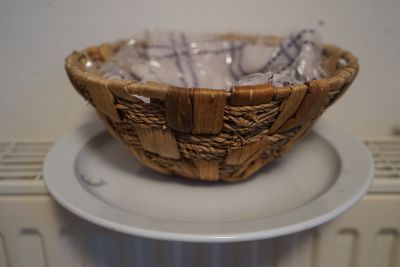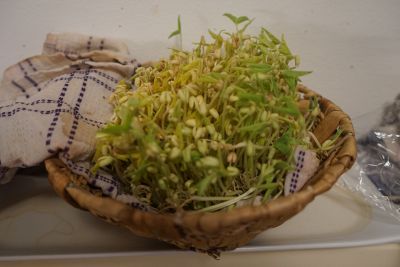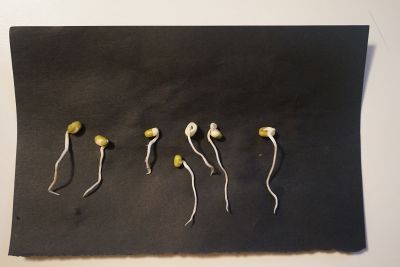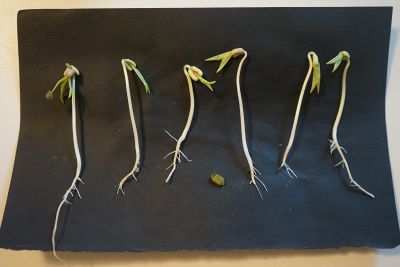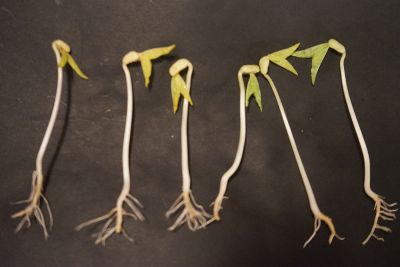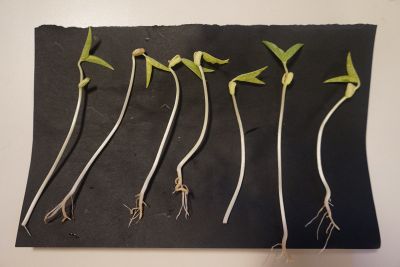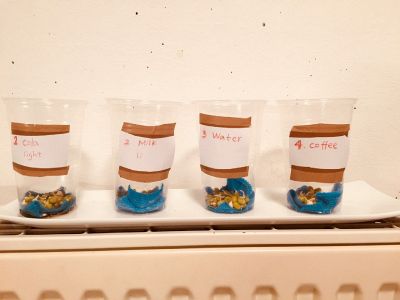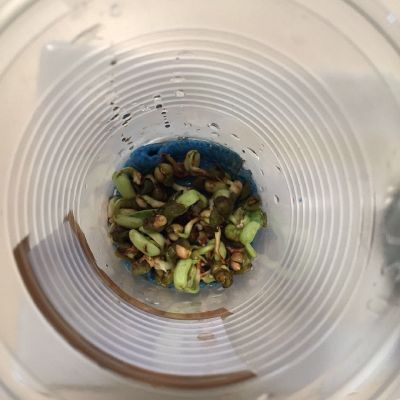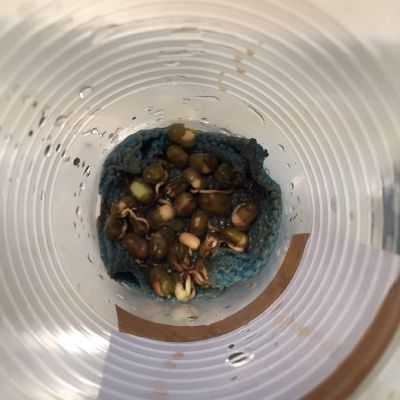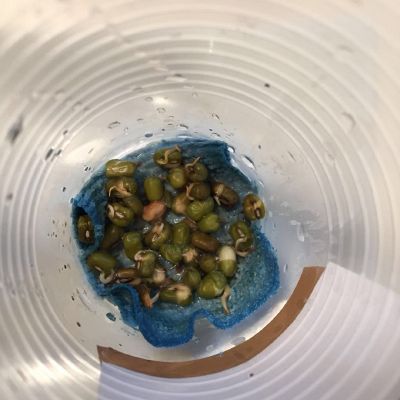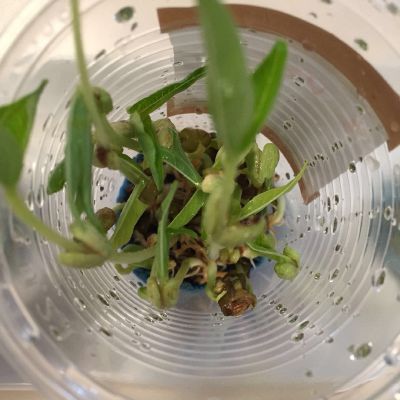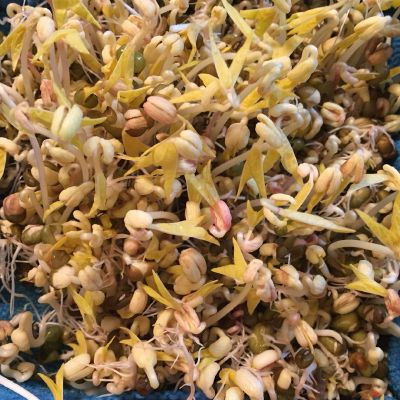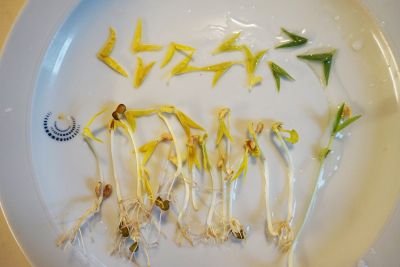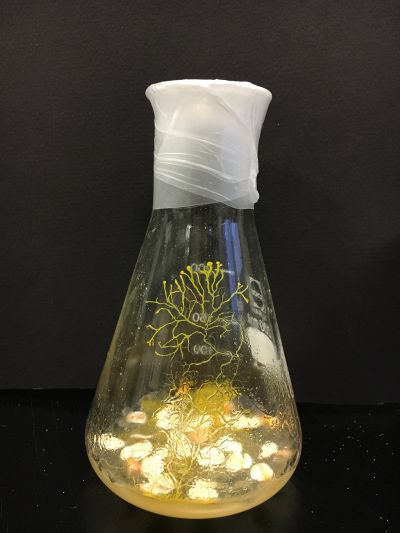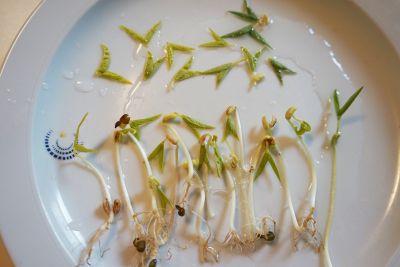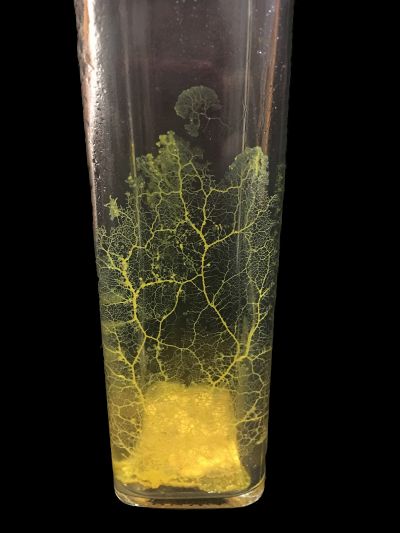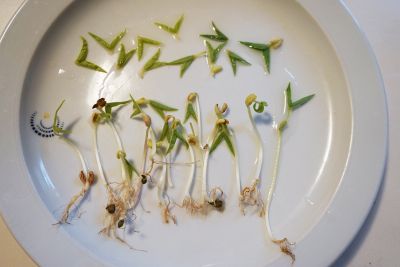I am going to make a work named "Bean sprouts lantern ",to use the small iron wires made some different shapes frame, then use strings to make some small "windows ",then let bean sprouts grow in a wet cotton in it,as days goes by, the sprouts will come out of the "windows ", it looks like a lantern.with this experienment ,I am aimed at exploring the growth pattern in three-dimension. File:Bio lab ideas(xiaomei).pdf
change ideas:after many thoughts, i finally change my idea about :to explore what will be a influence for the Mungbeans sprouts.
pre-experiment: to explore a relative normal environment for Mungbeans sprouts as the standard experiment.
experiment progress :
step 1:put a mount of Mungbeans in the water for 24hours.
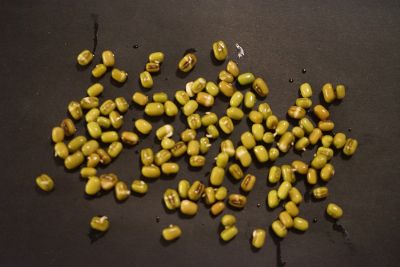
1)container:a flat bottom has a hole container, a block of wet cloth on the bottom;
2)temprature:control the constant temperature-put the contanier on the hinter
3)light:normal light with a change of day and night; use a cloth to always cover on one half of the container
and set up a no light environment.
4)water: watering them 2-3 times a day 36 degree around running water.
step 3:consequence:
1.in 72 hours, the sprouts reach up to 12cm around .
2.light has no obvious influence on the length of sprouts ,but the color of their leaves .
3.water is important in the growth of sprouts .
pictures:
2018.01.11:10.pm(put them in the water for 24hours,they start to sprouts.)
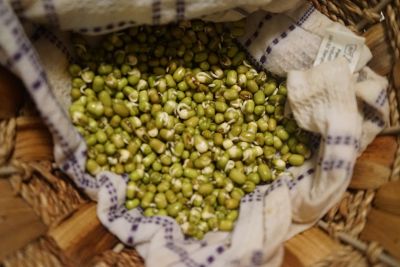
next step: 1.use the pre-experiment as the contrast one , and do the 3 different experiment to detect the Mungbeans's growth in different environment :
A:standard one 1. container:container with hole and wet cloth on the bottom 2. water:water beans sprouts 2-3 times a day with 36 degree around running water 3. temperature :put it on the hinter control it around 36-40 degree's 4. light :changeable light and night
B: contrast with A in temprature: 1. container:container with hole and wet cloth on the bottom 2. water:water beans sprouts 2-3 times a day with 36 degree around running water 3. temperature :put it on outdoor control it around 0-5 degree's 4. light :changeable light and night
C: contrast with A in nutrition liquid : 1. container:container with hole and wet cloth on the bottom 2. water:water beans sprouts 2-3 times a day with 36 degree around with some agar in water 3. temperature :put it on the hinter control it around 36-40 degree's 4. light :changeable light and night
D: contrast with A in light : 1. container:container with hole and wet cloth on the bottom 2. water:water beans sprouts 2-3 times a day with 36 degree around with running water 3. ttemperature :put it on the hinter control it around 36-40 degree's 4. light :contact light with a table lamp.
waiting to be done...
30/1/2018
my project: experiments on mungbean sprouts
1.introduction of mung beans: Most Mung Beans are grown in China by farmers - often with little machinery. After harvest they are left to dry on gravel roads - so they are dusty.Mung beans are germinated by leaving them in water for four -five hours of daytime light and spending the rest of the day in the dark. Mung bean sprouts can be grown under artificial light for four hours over the period of a week. They are usually simply called "bean sprouts".
2.reference: a).links: https://sproutpeople.org/growing-mung-bean-sprouts/ b).Quality Improvement of Canned Mung Bean (Vigna radiafa) Sprouts R. W. BUESCHER, J. S. CHANG{ main abstract:The effect of calcium, ascorbic acid, citric acid and EDTA on texture, color and flavor of mung bean sprouts canned as a low-acid food (pH > 4.6) and the effect of acidification by acetic, citric, gluconic, lactic and malic acids on quality of mung bean sprouts canned as an acid-food (pH < 4.6) were examined. Either the addition of calcium or acidification enhanced texture. Texture of products canned as low-acid food increased with decreasing pH. Color was markedly improved by either EDTA combined with ascorbic acid or acidification. Processing in plain (uncoated) cans or treatment with acetic acid was detrimental to flavor. Overall, the best low-acid food product was obtained by the combination of calcium, ascorbic acid, citric acid and EDTA while the best acid-food product was obtained by acidification with gluconic acid. }
3.organism: 50g mung beans Nutritional fluid:milk,cola,water,coffee environment:light;20-30degree temperature
4.experiment progress: first round: to detect the flavor by watering them with different Nutritional fluid result:except for the portion of water ,they all stop growing.
rescue: watering them water again to see if they are just sleep or die.
second round: to see the different color with light or no light a)organism: mung bean sprouts (grown up in no light environment )
31.1.2018
the rescue didn't work,the sprouts don't like cola,coffee and milk and they all died.
the changing of sprouts'color in the light.
the above portion' leaves are off the mother body the below portion' leaves are not off the mother body
consequences :they are all turn green in the same time and at the same speed.
31.1.2018,9:15am I put different color condition of sprouts on the plate with the strong light.
31.1.2018,13:15pm
